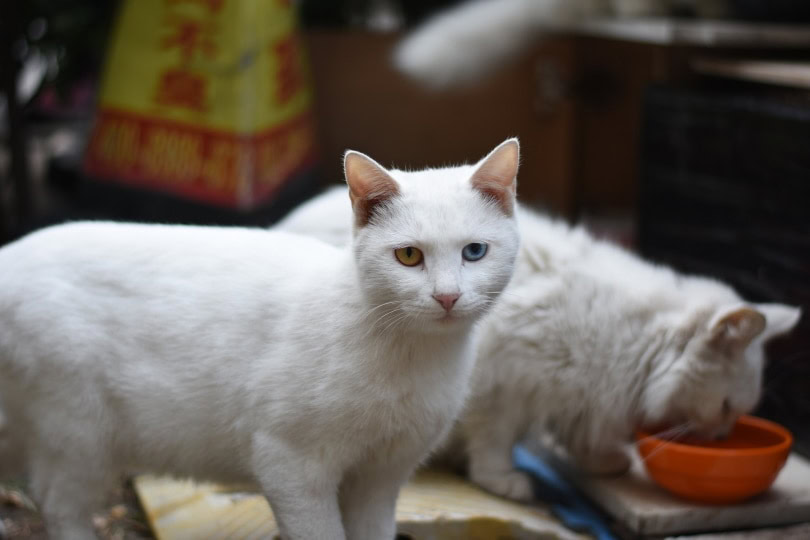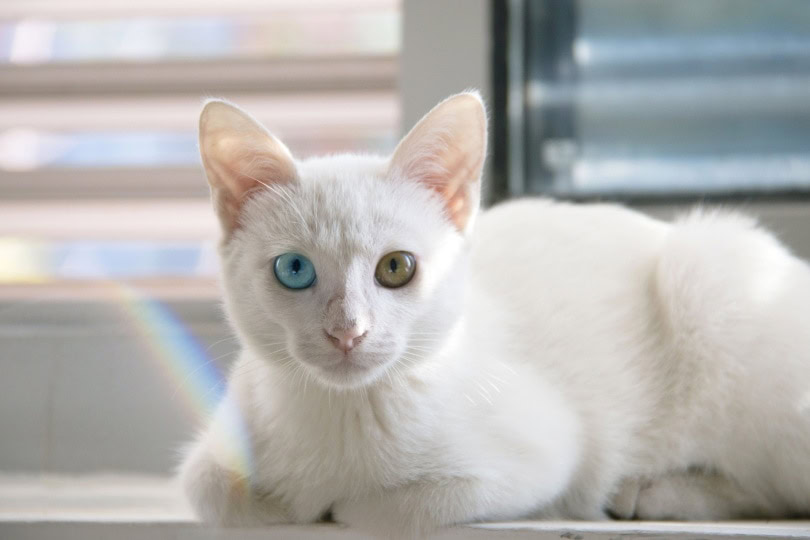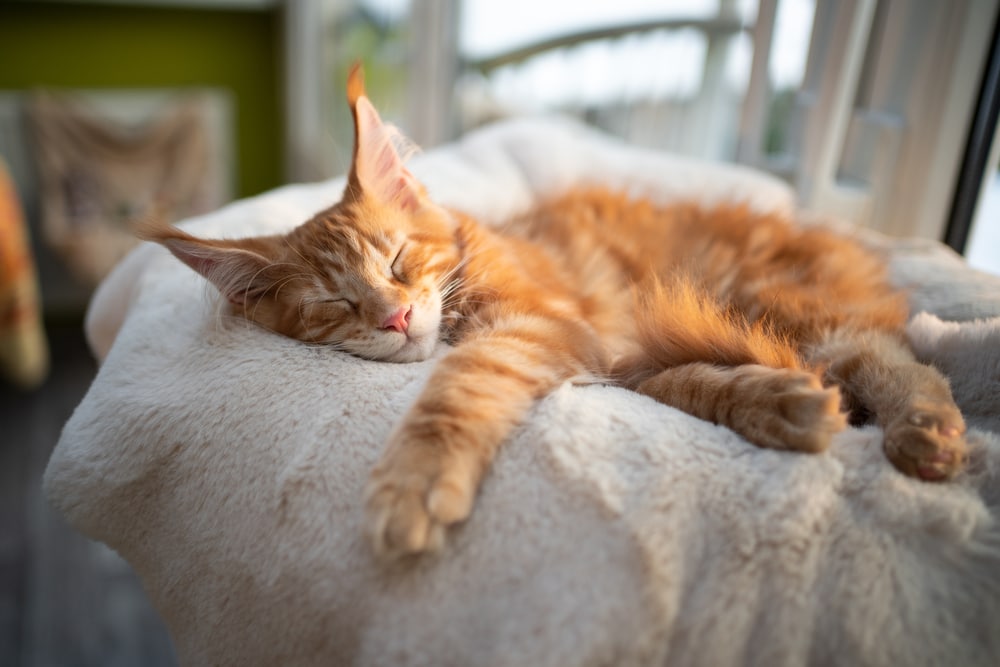VET APPROVED

The information is current and up-to-date in accordance with the latest veterinarian research.
Learn more »Click to Skip Ahead
Cats’ eyes are fascinating. As well as looking beautiful and being almost hypnotic, they enable cats to see exceptionally well in low-light conditions. This is thanks to unique features such as a wide cornea, slit-shaped pupils, a mirror-like structure called the tapetum lucidum, and specialized retinas that make them excellent crepuscular hunters.
In terms of physical appearance, cat eyes can be blue, green, yellow, brown, or a combination of these colors. Rarely, we even see cats with two different colored eyes, a condition known as heterochromia. White cats are more prone to heterochromia than cats of other coat colors because the genetic factors responsible for a white coat also influence pigmentation in the eyes.
Interestingly, a white cat with heterochromia is likely to be deaf in the ear on the same side of the head as the blue eye.

Cat Eye Color
All kittens are born with blueish eyes and their permanent eye color appears when they are around 7 weeks of age. Melanocytes, the cells in charge of producing melanin, become more active as kittens age. The process usually begins at around seven weeks of age and can continue until they reach two to three months of age. Once your cat reaches this age, they should have fully developed their eye color and this is the color they will remain.
Cats’ eyes come in a myriad of colors from blue to brown and yellow to amber.

Different Colored Eyes
Very occasionally, we see cats with two different colored eyes. This is most commonly seen in white cats. White cats either carry the dominant white gene or the white spotting gene, both of which result in a white coat or a coat with white patches. In both cases, these genes prevent melanin pigment from reaching the coat, giving the cats their distinctive white fur. These same genes also influence the amount of melanin present in the eye
Does Heterochromia Cause Any Problems?
Heterochromia does not affect a cat’s vision in any way, and it won’t cause a cat to have any sight difficulties or be deaf. Because it is most often found in white cats, a cat with odd-colored eyes may be deaf, because congenital deafness is associated with the same genes that cause the white coat color, but it is not a result of eye color.
Approximately 20% of white cats without blue eyes are born deaf. In white cats with at least one blue eye, this percentage increases to around 40%. The likelihood of deafness rises sharply for white cats with two blue eyes, with approximately 65-85% being deaf in one or both ears.
If you have additional questions about heterochromia or suspect your cat may have it, you should consult a vet.

Why Do Some Cats Have Two Different Colored Eyes?
Cats come in many different shapes and sizes, including having different colored eyes. Kittens are born with blue-gray eyes but as they age, melanin spreads into the irises, changing the color from the original blue to various shades of yellow, green, brown, and orange.
The gene that causes white cats to have their white coat, can also inhibit pigment from reaching their eyes. In some cases, pigment might develop in one eye but not in the other, resulting in heterochromia (two different colored eyes). The condition is not dangerous and doesn’t affect the cat’s vision, but the same gene that gives the cat its white coat and unusual eyes can also cause congenital deafness.
Related Reads:
- Conjunctivitis in Cats (Pink Eye): Treatments, Signs & Prevention
- Deafness & Blindness In White Cats: Here’s What the Statistics Say
Featured Image Credit: Pixabay












